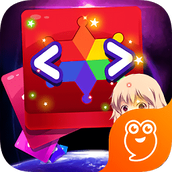最新下载
热门教程
- 1
- 2
- 3
- 4
- 5
- 6
- 7
- 8
- 9
- 10
将Python字符串转换为JSON代码实现方法
时间:2022-06-25 01:31:16 编辑:袖梨 来源:一聚教程网
本篇文章小编给大家分享一下将Python字符串转换为JSON代码实现方法,文章代码介绍的很详细,小编觉得挺不错的,现在分享给大家供大家参考,有需要的小伙伴们可以来看看。
什么是 JSON
JSON 是 JavaScript Object Notation(JavaScript 对象标记)的缩写。
它是一种数据格式,用于为 Web 应用程序存储和传输信息。
JSON 最初来自 JavaScript 编程语言,但它并不仅仅局限于一种语言。
大多数现代编程语言都有用于解析和生成 JSON 数据的库。
在哪里使用JSON
JSON 主要用于在服务器和客户端之间发送和接收数据,其中客户端是网页或 Web 应用程序。
在 Web 应用程序通过网络连接时使用的请求-响应周期中,这是一种更可靠的格式。与复杂且不太紧凑的 XML 相比,JSON 是使用得更多的格式。
基本的 JSON 语法
在 JSON 中,数据以键值对的形式写入,如下所示:
"first_name": "Katie"
数据用双引号括起来,键值对用冒号分隔。
可以有多个键值对,每个键值对之间用逗号分隔:
"first_name": "Katie", "last_name": "Rodgers"
上面的例子展示了一个对象,一个多个键值对的集合。
对象在花括号内:
{
"first_name": "Katie",
"last_name": "Rodgers"
}
你还可以使用 JSON 创建数组,即值的有序列表。在这种情况下,数组包含在方括号内:
[
{
"first_name": "Katie",
"last_name": "Rodgers"
},
{
"first_name": "Naomi",
"last_name": "Green"
},
]
// or:
{
"employee": [
{
"first_name": "Katie",
"last_name": "Rodgers"
},
{
"first_name": "Naomi",
"last_name": "Green"
},
]
}
//this created an 'employee' object that has 2 records.
// It defines the first name and last name of an employee
如何在 Python 中处理 JSON 数据
包含 JSON 模块
要在 Python 中使用 JSON,首先需要在 Python 文件的顶部包含 JSON 模块。这是 Python 内置的,是标准库的一部分。
因此,假设你有一个名为 demo.py 的文件。在顶部,你将添加以下行:
import json
使用 json.loads() 函数
如果你的程序中有 JSON 字符串数据,如下所示:
#include json library
import json
#json string data
employee_string = '{"first_name": "Michael", "last_name": "Rodgers", "department": "Marketing"}'
#check data type with type() method
print(type(employee_string))
#output
#
你可以使用 json.loads() 函数将其转换为 Python 中的 JSON。
json.loads() 函数接受有效字符串作为输入并将其转换为 Python 字典。
这个过程叫作反序列化——将字符串转换为对象。
#include json library
import json
#json string data
employee_string = '{"first_name": "Michael", "last_name": "Rodgers", "department": "Marketing"}'
#check data type with type() method
print(type(employee_string))
#convert string to object
json_object = json.loads(employee_string)
#check new data type
print(type(json_object))
#output
#
然后,你可以访问每个单独的项目,就像使用 Python 字典时一样:
#include json library
import json
#json string data
employee_string = '{"first_name": "Michael", "last_name": "Rodgers", "department": "Marketing"}'
#check data type with type() method
print(type(employee_string))
#convert string to object
json_object = json.loads(employee_string)
#check new data type
print(type(json_object))
#output
#
#access first_name in dictionary
print(json_object["first_name"])
#output
#Michael
让我们再举一个例子:
1. 取一些 JSON 字符串数据
import json
#json string
employees_string = '''
{
"employees": [
{
"first_name": "Michael",
"last_name": "Rodgers",
"department": "Marketing"
},
{
"first_name": "Michelle",
"last_name": "Williams",
"department": "Engineering"
}
]
}
'''
#check data type using the type() method
print(type(employees_string))
#output
#
2. 使用 json.loads() 函数将字符串转换为对象
import json
emoloyees_string = '''
{
"employees" : [
{
"first_name": "Michael",
"last_name": "Rodgers",
"department": "Marketing"
},
{
"first_name": "Michelle",
"last_name": "Williams",
"department": "Engineering"
}
]
}
'''
data = json.loads(employees_string)
print(type(data))
#output
#
3. 读取数据
import json
employees_string = '''
{
"employees" : [
{
"first_name": "Michael",
"last_name": "Rodgers",
"department": "Marketing"
},
{
"first_name": "Michelle",
"last_name": "Williams",
"department": "Engineering"
}
]
}
'''
data = json.loads(employees_string)
print(type(data))
#output
#
#access first_name
for employee in data["employees"]:
print(employee["first_name"])
#output
#Michael
#Michelle
相关文章
- 污污漫画入口风险警示-合规访问指南与安全指引 12-13
- 海棠文学城网页版官网入口-2025在线网址直达 12-13
- 土豪漫画官方APP免费下载入口-正版无广告畅读保障 12-13
- 歪歪漫画app最新版下载入口-首页畅读无广告直接进 12-13
- SkrBT磁力官网最新入口-skrbt磁力引擎极速版入口 12-13
- 微博热搜网页版极速入口-微博热搜榜官方直达链接 12-13














